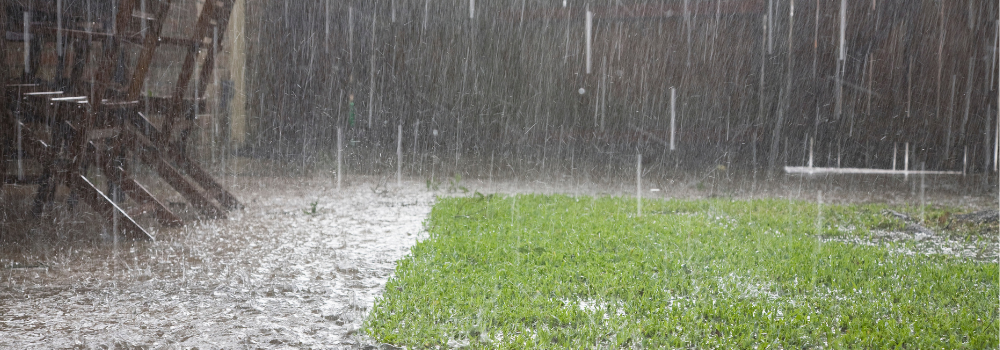
Rain and Its Effect on Soil Health
Share
Hey there, green thumbs and dirt enthusiasts! Today, we're diving into the intriguing world of rain and its profound impact on the soil beneath our feet. Have you ever wondered what happens to the garden after a good downpour, aside from the obvious mud puddles and the joy of plants? Well, rain does more than just quench the thirst of our green friends. It plays a crucial role in shaping soil health, affecting everything from soil composition and structure to nutrient levels. And guess what? Your trusty rain gauge can be a secret weapon in managing these effects. Let's unravel this mystery together.
The Lifeline of the Garden: Rain's Role
Rain is like the bloodstream of the garden, carrying essential nutrients, affecting soil pH, and even shaping the soil's physical structure. When rainwater hits the ground, it doesn't just sit there; it starts a journey that can lead to both beneficial and challenging outcomes for the soil.
Soil Composition and Structure
Rainwater can cause compaction, especially in soils heavy in clay. This means the soil particles are pushed closer together, which can make it hard for roots to spread and for air to circulate through the soil. On the flip side, gentle rains can help to break up soil clumps, making it easier for plant roots to get through and for air and nutrients to circulate.
Nutrient Levels
Rain is a double-edged sword when it comes to nutrients. On one hand, it's necessary for dissolving and distributing nutrients in the soil that plants need to grow. On the other hand, too much rain can lead to leaching, where these nutrients are washed away before plants have a chance to absorb them. This is particularly true for nitrogen, potassium, and magnesium.
The Impact of Rain: A Closer Look
When it rains cats and dogs, the immediate concern for your soil is erosion and nutrient runoff. Heavy rainfall can strip the topsoil of its nutrient-rich layer and carry it off to who knows where (usually the nearest storm drain or water body). This not only deprives your plants of their much-needed food but also affects water quality downstream.
But it's not all doom and gloom. Rainwater is naturally soft, free from the salts and chemicals found in tap water, which can accumulate in the soil over time and hinder plant growth. Plus, raindrops help to knock dust off leaves, improving photosynthesis and plant health.
The Gardener's Ally: The Rain Gauge
Here's where our little hero, the rain gauge, comes into play. This simple tool can help you keep track of how much rain your garden is getting. Why is this important? Because understanding your garden's "hydration levels" can guide you in making informed decisions about watering (saving you on your water bill and conserving water), and help you take action to protect your soil after heavy rains.
Protecting and Enhancing Soil Health After the Storm
So, what can you, the eco-conscious gardener, do to mitigate the effects of a heavy downpour and ensure soil health remains in tip-top shape? Here are a few tips:
Mulch, Mulch, Mulch: Applying a layer of organic mulch can help prevent soil erosion by absorbing the impact of raindrops. It also helps to retain moisture in the soil and adds organic matter as it decomposes, improving soil structure and fertility.
Build Raised Beds: If drainage is an issue in your garden, raised beds can be a game-changer. They ensure that water drains more efficiently, preventing soil compaction and root rot.
Diversify Planting: Deep-rooted plants can help stabilize the soil and prevent erosion. Planting a variety of species can also ensure that, no matter the weather, some plants will thrive.
Catch and Store Rainwater: Installing a rain barrel or creating a rain garden can help catch excess rainwater, which you can then use during drier periods. This not only reduces runoff but also makes the most of every drop.
Test and Amend Your Soil: Regularly testing your soil's nutrient levels and pH can help you understand what your garden needs. After heavy rains, you might need to replenish lost nutrients with organic fertilizers or adjust the pH to keep your soil balanced.
Embrace the Rain
Heavy rain doesn't have to be a gardener's foe. With a bit of preparation and understanding, you can turn it into an ally. The key is to work with nature, not against it. By monitoring rainfall with your rain gauge, protecting your soil with smart gardening practices, and staying attuned to the needs of your plants, you can ensure that your garden not only survives but thrives, come rain or shine.
Remember, every garden is unique, and there's no one-size-fits-all solution. But with a little observation and a lot of love, you can create a resilient garden that withstands the whims of the weather while providing a lush, thriving haven for plants and wildlife alike.
So, next time you see those clouds rolling in, instead of fretting, you'll grab your rain gauge, check the forecast, and smile, knowing that you're prepared to harness the rain's power for the benefit of your garden. After all, every drop of rain is a potential drop of life for your garden, and with the right knowledge and tools, you can make every drop count. Happy gardening!
